Petroglyphs of Utah Sego Canyon – Hunting for petroglyphs or ancient rock art can sometimes take you to amazing places. Other times they are almost hiding in plain sight but you need to know where to go. Sego Canyon is just off of Interstate 70 and only 20 – 30 minutes down the road. It’s tucked away into a canyon once used for mining operations. This location has petroglyphs from several peoples; Fremont, Ute, and Barrier Canyon Style. The Barrier style is possibly the oldest, dating back to approximately 2000 BC, while the Ute style is the most recent, dating back to 1300-1600 AD. It is clear that these people lived within this area from thousands to hundreds of years ago.
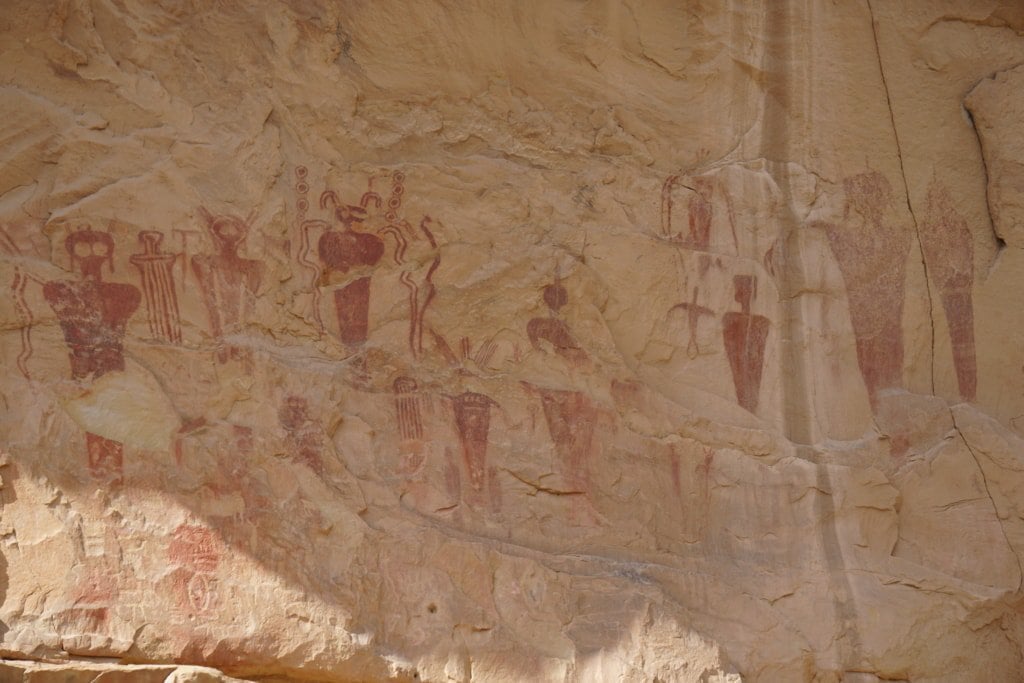
Estimated reading time: 8minutes
Exploring Sego Canyon Petroglyphs Table of Contents 1. Sego Canyon
Petroglyphs Of Utah
Sego Canyon Rock Art
Anthropologists and Archeological scientists have documented several groups of people within this area of Utah, and the Barrier style of Petroglyph does get the most attention. Shows like Ancient Aliens and other conspiracy theory shows like to talk about them. However, there are others in this same canyon that do not get shown as much. Here in this article, I will show some of the Ute people‘s petroglyphs that in my opinion show how people lived, and possibly roamed the area when they were done.
Looking for Petroglyphs In Sego Canyon Utah
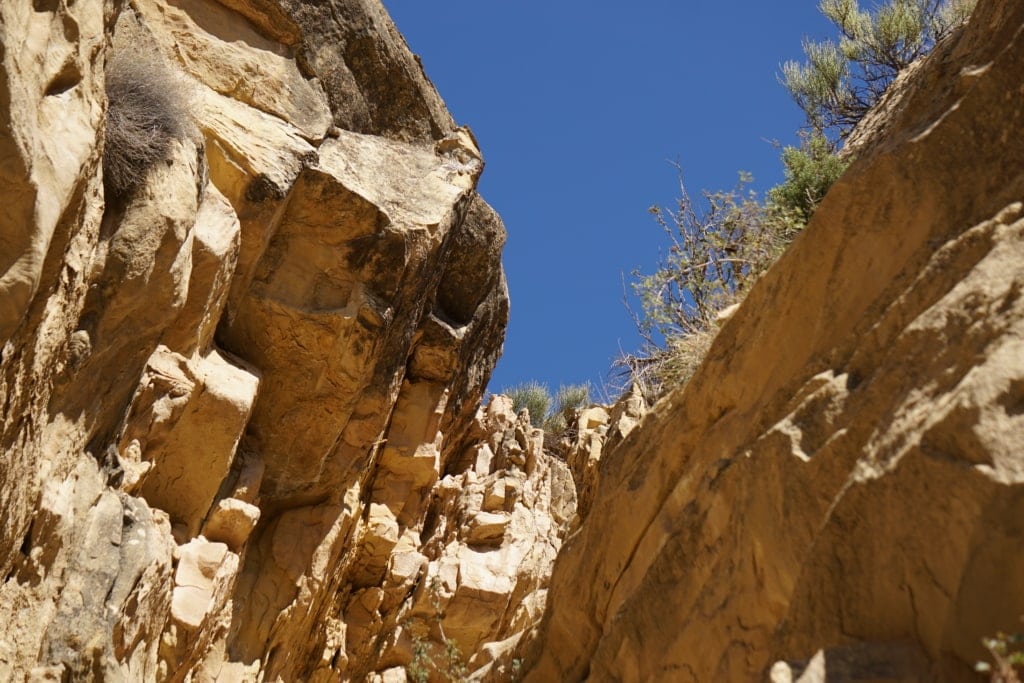
Looking for petroglyphs can require a keen eye, and they are not always marked. This particular location didn’t really have a sign in the area, but they are close by once you begin looking around. I did have to climb up to get close to the Ute petroglyphs, and it did require some climbing. Others were very easy to reach and at ground level. Petroglyphs of Utah are different in variety and help to shed light on our human past.
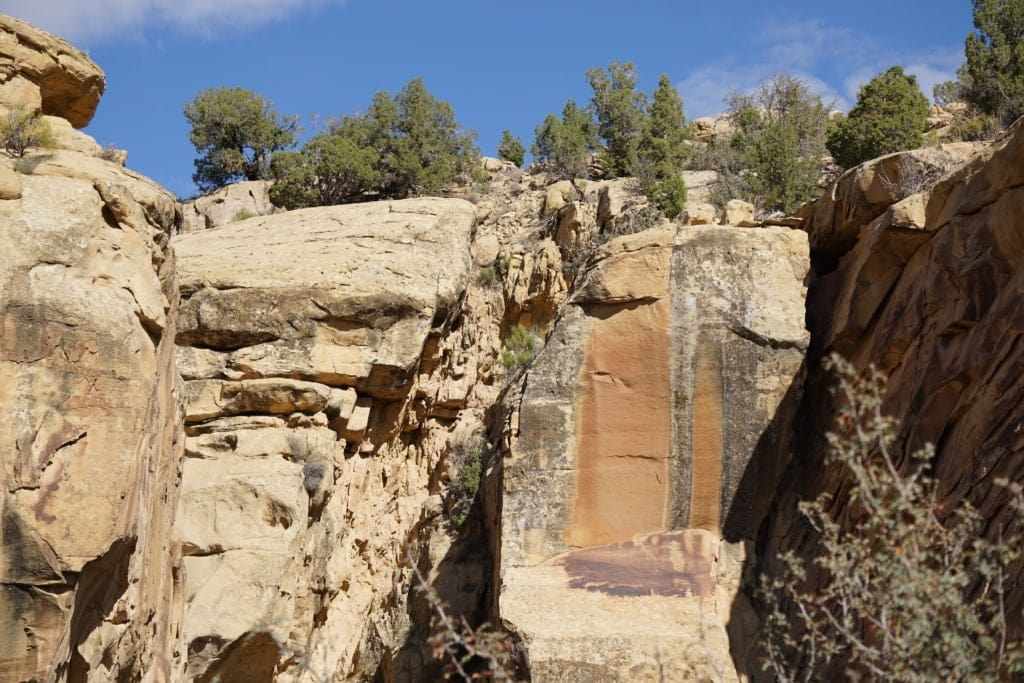
Make sure to bring plenty of water, and comfortable clothing for the area. It can get very hot and dry in the summer. In the winter it can be very cold and windy so dress according to the season. Good shoes or boots are important within Sego Canyon, and snakes live in the area during the summer months so please be aware.
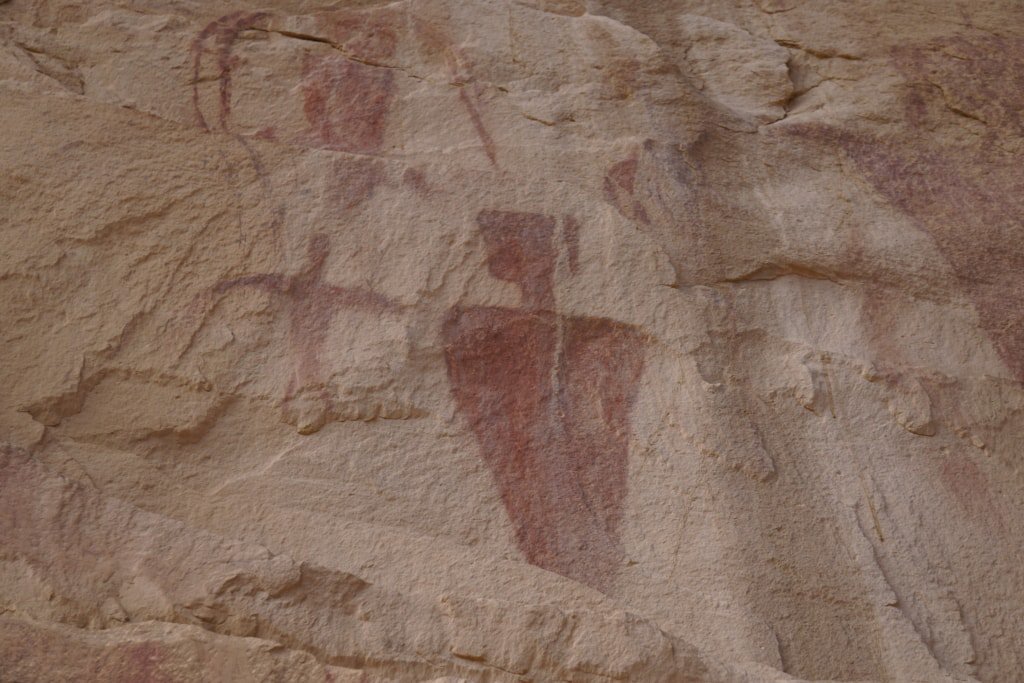
The Barrier Canyon Style Petroglyphs
Barrier CanyonPetroglyphs (6000 B.C. – 100 B.C.)
The Barrier Canyon Stylepetroglyphs are noticeable by the large triangular shapes, and often receive most of the attention. There is some debate as to the age of these amazing petroglyphs but that research is deprived of the Grand gallery panel in the Canyonlands National Park.
Barrier Canyon Style rock art is characterised by large human-like (anthropomorphic) forms, some as tall as nine feet. The identifying features are vacant looking or missing eyes, the frequent absence of arms and legs, and the presence of vertical body markings. They are sometimes seen with antennae, earrings, and with snakes in their hands. The ghost-like images are some of the most unusual forms of rock art seen in the area.
Aprilholloway. “The Haunting Rock Art of Sego Canyon – Extra-Terrestrials or Spiritual Visions?” Ancient Origins, Ancient Origins, 23 Apr. 2014, https://www.ancient-origins.net/ancient-places-americas/haunting-rock-art-sego-canyon-extra-terrestrials-or-spiritual-visions-001584.
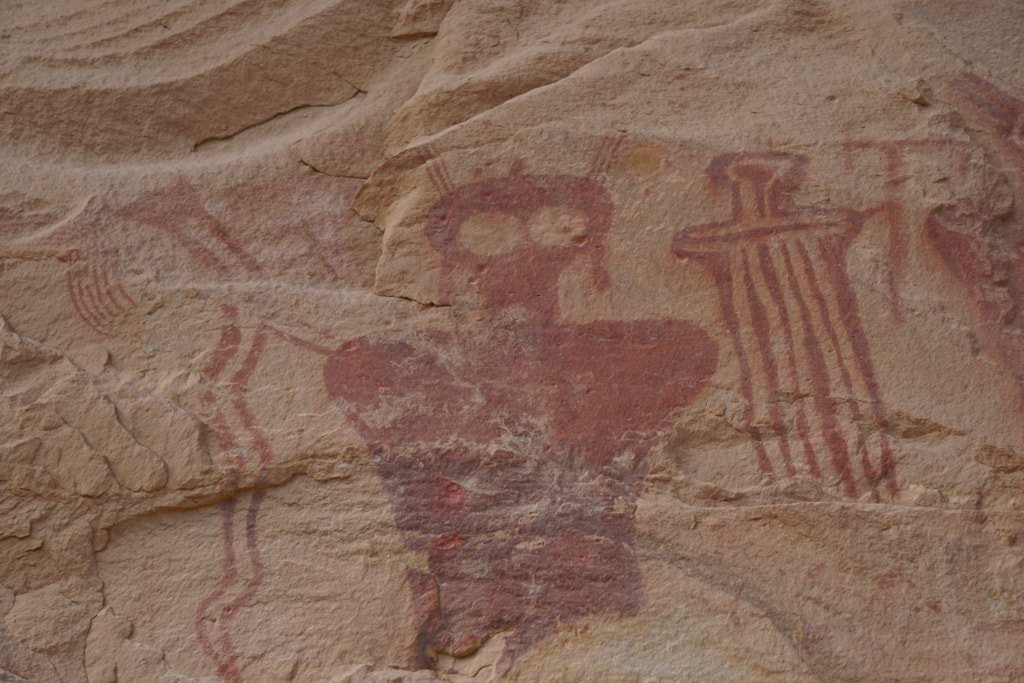
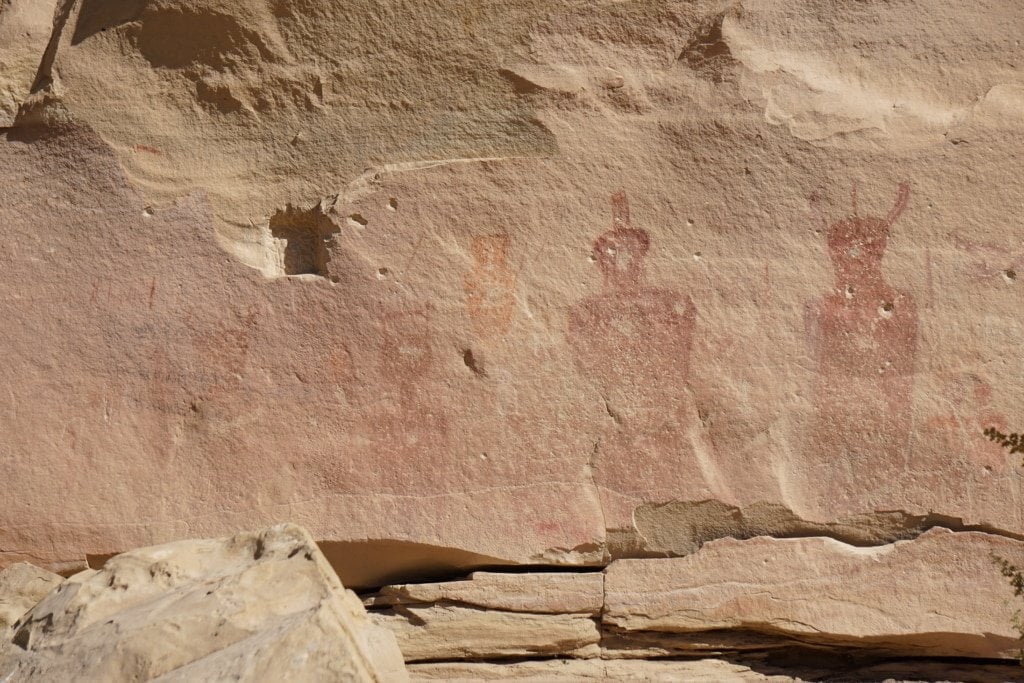
Ute People Petroglyphs in Sego Canyon
Ute IndianPetroglyphs (1300 A.D. – 1880 A.D.)
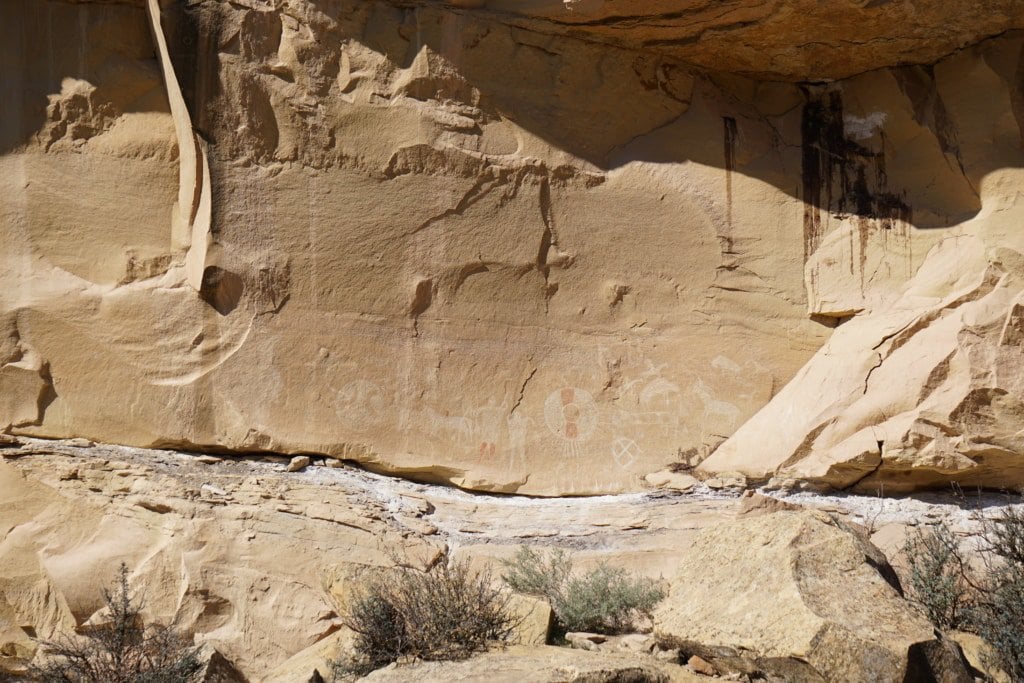
This full panel helps pull things together, and the excerpt below from Science Views puts the time period within a great historical context.
The Historic Ute rock art is identified and dated by the horse and rider figures. Horses were introduced to North America by the Spanish in the sixteenth century. Other figures, or elements, painted in red and white on the panel include a white bison, a human figure with leggings, several large human figures, and large circles believed to be shields. The Ute people practiced a hunting and gathering lifeway. They used the bow and arrow, and made baskets and brownware pottery, and lived in brush wikiups and tipis. The No-tah (Ute people) lived freely throughout western Colorado and easternUtah until about 1880, when they were forced onto reservations.
Sego Canyon Petroglyphs, https://scienceviews.com/indian/segocanyon.html.
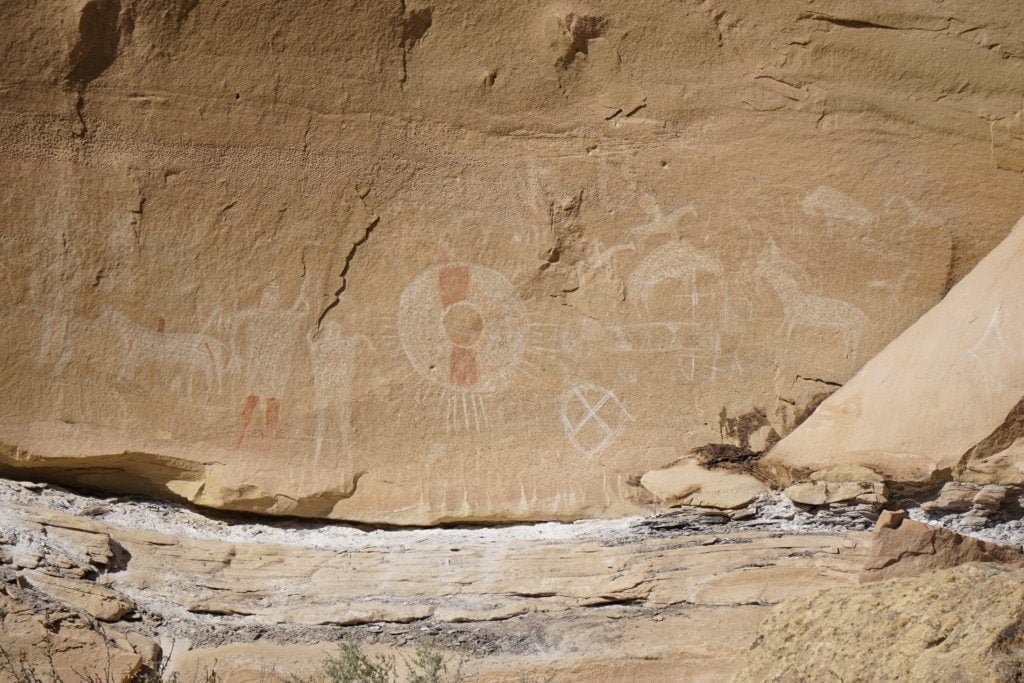
Ute people petroglyphs in Sego Canyon UtahHere you can see the full panel in pretty good detail. I did have to climb up the side of the cliff onto the rock face to get this shot.
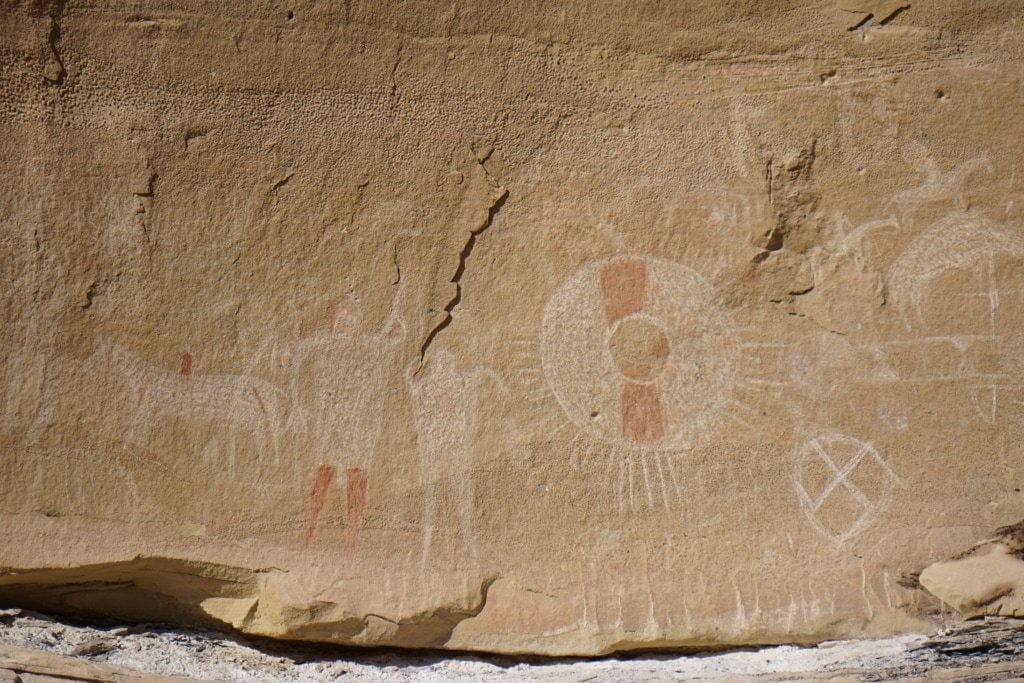
This panel shows the combination of scratching or carving into the rock and the additional adding of color. I only saw this here but some of the other panels had been damaged. I think the shield is significant since this particular style may be traceable to other locations.
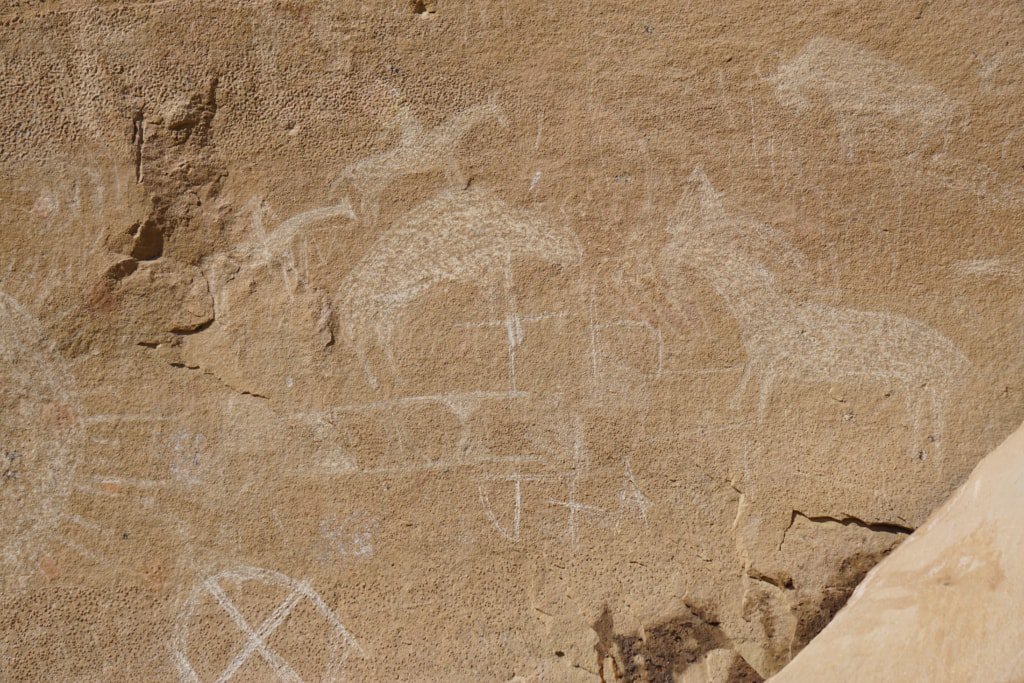
The close shot of the Ute panel does show people riding horses or ponies, and that is significant for timing. We know horses were introduced into the Americas again by the Spaniards so that does give us a time frame. Also, domestication of the animals happens later in time so this also helps us in placing them into the context of history.
Mixed Glyphs From Fremont and Ute Peoples in Sego Canyon
Fremont Indian Petroglyphs (600 A.D. – 1250 A.D.)
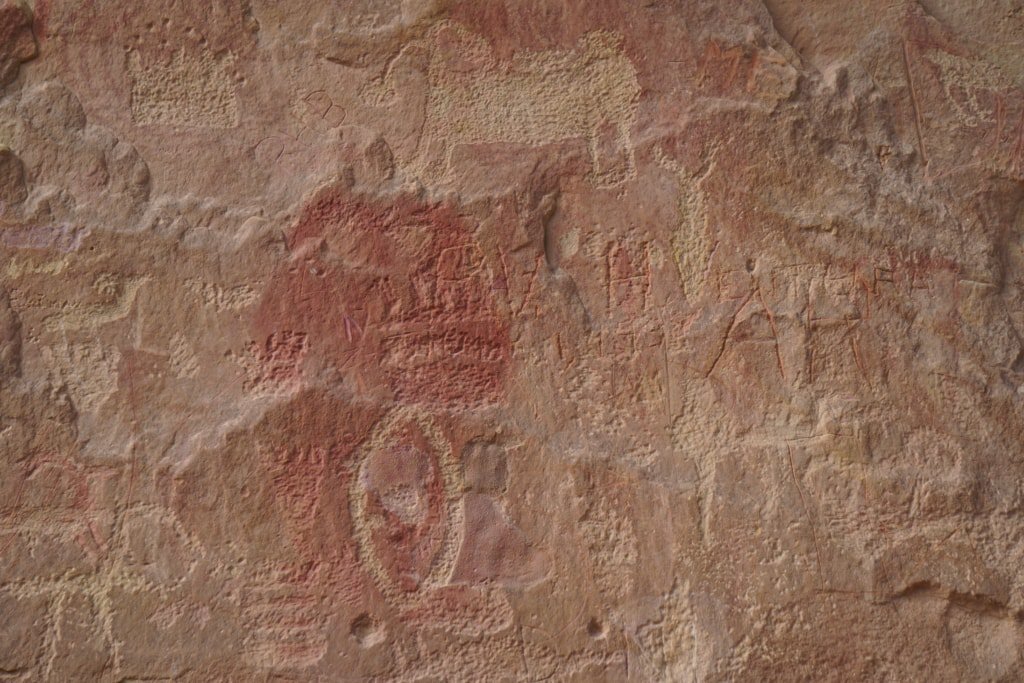
Conclusion
I found this site very educational, and well worth the time and energy needed to visit and to document the site. With the ability to access the site so easily I would like to see the State of Utah take it over and better preserve the site. I am assuming the site may be still owned by the mining company but I have seen public and private entities work together before to preserve history for the future. The Sego Canyon rock art and petroglyphs provide us a small glimpse of time from several cultures within the same location.
References:
April holloway. “The Haunting Rock Art of Sego Canyon – Extra-Terrestrials or Spiritual Visions?” Ancient Origins, Ancient Origins, 23 Apr. 2014, https://www.ancient-origins.net/ancient-places-americas/haunting-rock-art-sego-canyon-extra-terrestrials-or-spiritual-visions-001584.
Sego CanyonPetroglyphs, https://scienceviews.com/indian/segocanyon.html.